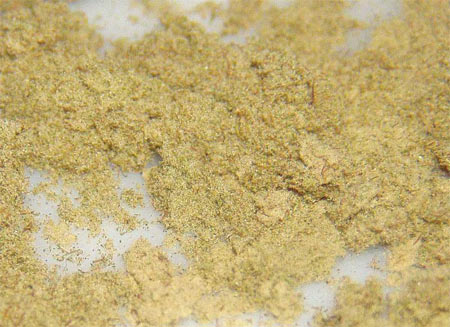
by Greg Green
Basics of screening
Flat silk screening
Screening is a process much like cheese grating but on a much finer level. A silk screen is stretched across a square wooden frame and nailed tight to it. The screen typically has a pour size between 180 to 120 microns. The smaller the microns the higher the quality, but the lesser the amount. The larger micron pours will result in larger sieved amounts but some leaf matter and branch trim will drop through. This will degrade the quality of hash that you smoke. Actually typical street hash is not nearly as fine or better in quality than the larger pour screen method.
The bud is placed over the screen and can either be manually dragged across the screen or rolled across the screen using a roller. Manually it is much easier if you are using smaller quantities of bud but for larger quantities another method should be adopted like the automatic tumbling method. A sheet of glass placed under the screen is the best way of catching the matter that falls through the screen. After the process is finished the screen can be patted down to shake any powder that is stuck in the pours.

Flat metal screening
This is done much like the flat silk screen method but before the flat silk is used the bud will go through a metal grating process. The metal grate is usually made from tough nylon or stainless steel and is of equal proportions in pour size to the silk screen. By first using the metal grate we can remove more matter from the bud than the single silk screen would do. The bud matter that passes through the metal screen can then be sieved through the silk screen by shaking the screen back and forth over a glass surface. You can end up with 2 grades of sieved bud residue this way. The silk screening should produce mostly trichomes.
Multiple screening method
This is a refined version of the above two methods. Several screens can be used in this method but the average is four of five. Each screen running from start to finish should have a different micron measurement starting from the largest and running down to the smallest silk screen. The bud matter is sieved through the first screen and then down onto the second screen. The process is repeated picking up and sieving with each new screen until most of the matter has passed through. You should end up with several screens that contain bud matter running down to the finer trichomes on the last screen. This is an excellent way to achieve the best results. You should end up with several screens each with different qualities of cannabis residue.

